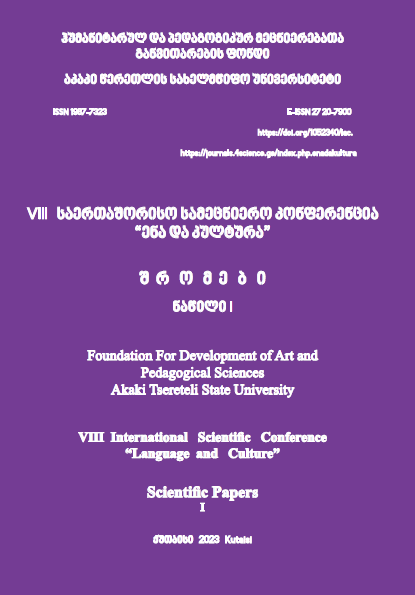Exploring Multimodality - Social-semiotic Analysis of Communication in TEFL
DOI:
https://doi.org/10.52340/lac.2023.08.05Abstract
The aim of the research is to deal with the problem of multimodality as a field of study investigating the common as well as the distinct properties of different modes in the multimodal mix and the way they integrate in teaching process and communicative events in general. In the era of digital and technological advancement , in the epoch of computerized classrooms , we see the increasing role of multimodal mix in teaching / learning process. With the help of contemporary classroom equipment and modern handbooks we provide our students with rich multimodal teaching materials, so that they have access to different modes : - verbal, textual, visual, graphic, audio and video. The use of all these modes is aimed at providing our students with the variety of linguistic and nonlinguistic forms to help them develop their communicative competence.
Downloads
References
კრესი და ლიუენი 2001- Kress, Gunther R., and Theo Van Leeuwen. (2001). Multimodal discourse: The modes and media of contemporary communication. Vol. 312. London: Arnold;
კრესი 2009 - Kress, G. (2009). Multimodality: A social semiotic approach to contemporary communication. Routledge.
კრესი 2000- Kress, G. (2000). Multimodality. Multiliteracies: Literacy learning and the design of social futures; Routledge.
ინტერნეტ რესურსი:
Applying The Multimodality Theory in eLearning By Christopher Pappas;
https://www.docebo.com/learning-network/blog/applying-the-multimodality-theory-in-elearning/









